Implante femoral atornillado al eje femoral lateral
The Philosophy of this implant is to respect as much as it is
technically possible the bone physiology. The surgical theorical
concept is based on three parameters: The respect of the upper
femoral metaphysis elasticity. The periosteum property. The respect
of the medullary stem canal [1]. The cancellous bone of both long
bone’s extremities is the most important element of their elasticity
and needs compression [2]. The periosteum is acting during all day
life. It produces bone apposition even when or/and over 100 years [4].
The medullary canal vascularised 2/3 of the femoral shaft cortex [2],
provides blood cells and interferes in bone’s remodelling [5]. At last
the femoral component must reproduce the compression strain acting
on the medial part of the femoral upper metaphysis in order to avoid
resorption of the calcar [6-7]. For these biological facts, it is important
to use them or to minimise either their destruction or their removal.
The principle is to remove the least possible cancellous bone in the
upper femoral metaphysis, to use the perisoteum bone apposition and
do not enter in the medullary canal.
Figure 1 shows as the first femoral component was in
Chrome Cobalt alloy. (Vitallium). The second is in Titanium.
The femoral component is screwed on the lateral femoral shaft. The
screw diameter is 5 mms (c) to fix the plate on the femoral shaft and
7 mms (a) to maintain the greater trochanter. Two teeths (b) prevent
gluteus medius muscular action. The hole’s plate and screw’s design are
according to the Meyrues and Cazenave’s experimental work [8].
Eccentricity of the right metallic femoral head 0.7 cm loosening
of polyethylene in 30 Years No calcar resorption, no screws fracture,
periosteum inamovible apposition. Harris score: 100 (Figures 2-14).
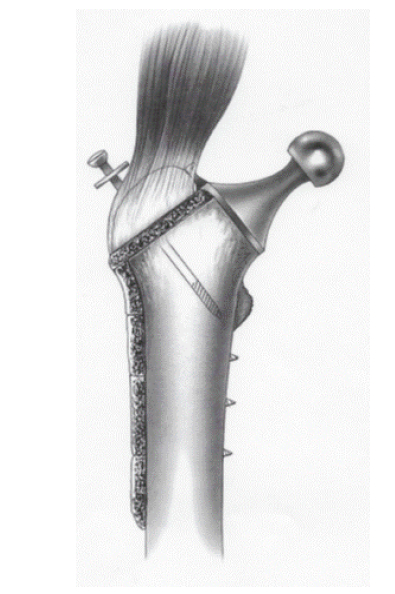
Figure 1. Female implant with external cortical support
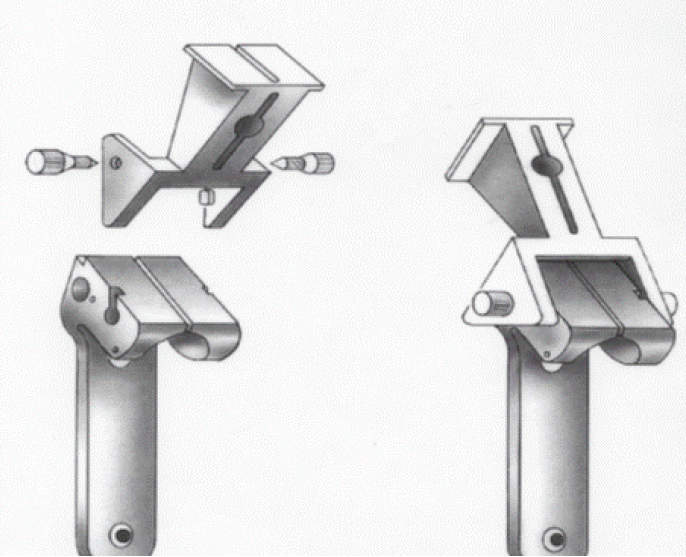
Figure 2. The ancillary instrumentation
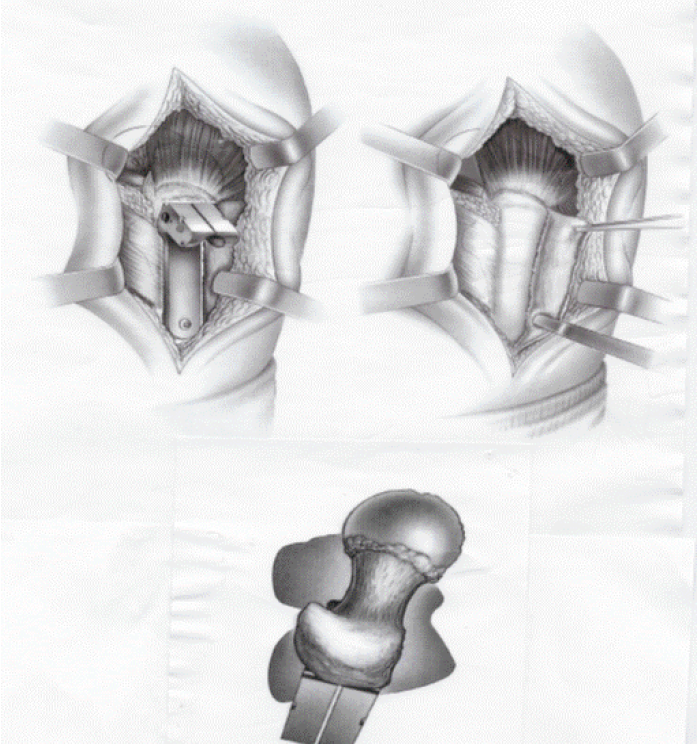
Figure 3. Setting cut guides
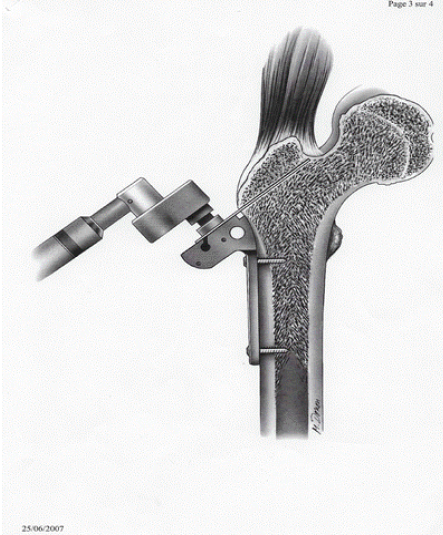
Figure 4. Greater trochanteric cut

Figure 5. Femoral neck section
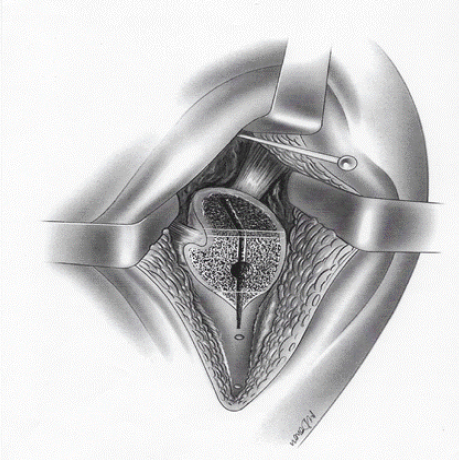
Figure 6. Aerial view of both sections
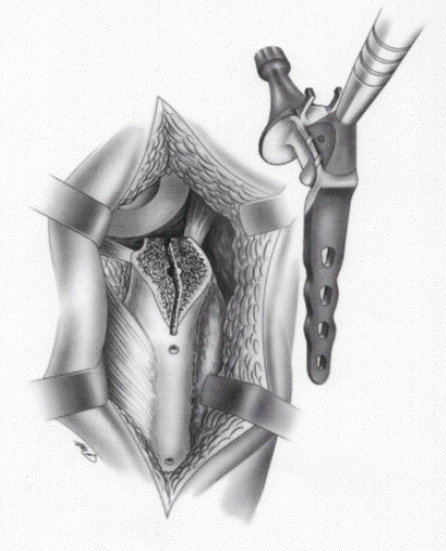
Figure 7. Positioning of the implant

Figure 8. Screwing of the femoral implant
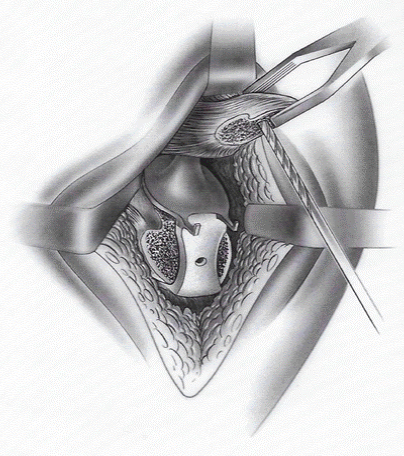
Figure 9. Preparation of the trochanteric screw

Figure 10. Greater trochanter in place
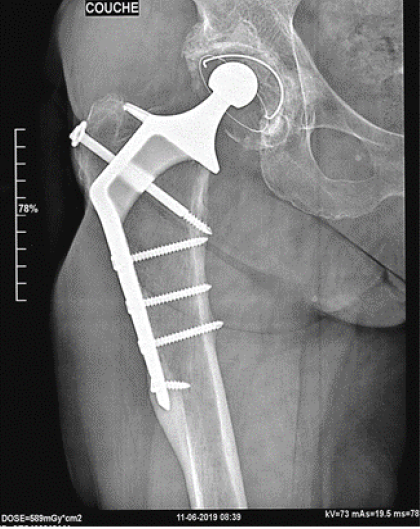
Figure 11. Thirty years after surgery
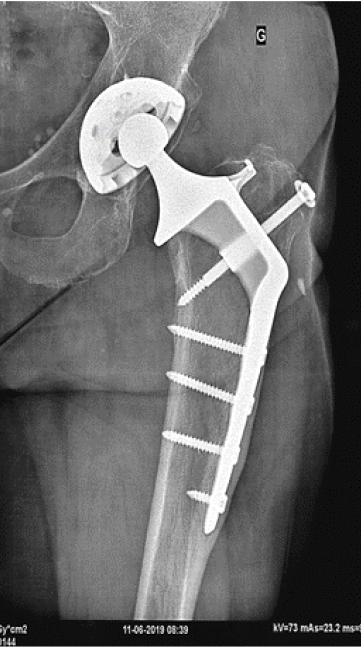 \
\
Figure 12. Twenty-six years after surgery
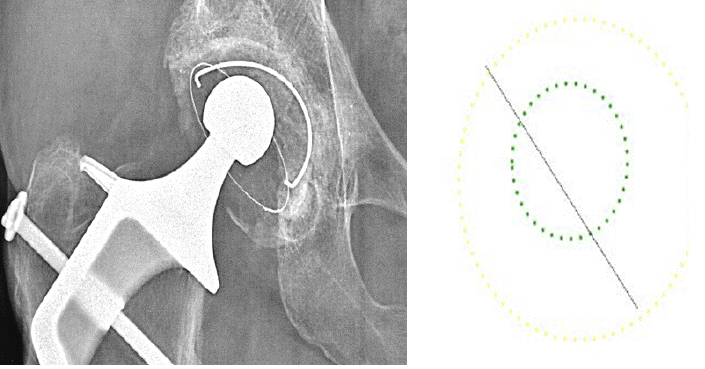
Figure 13. 30 years follow up excentration of the head: 0.7 cm and ≠0.02 mm per year
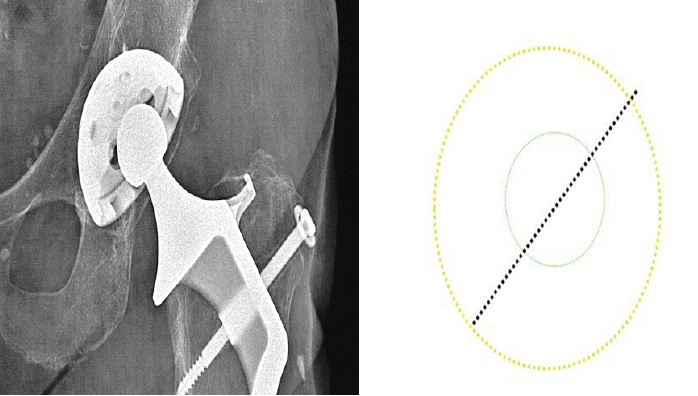
Figure 14. Polyethylene loosening 26 Years follow-up and ≠0.015 mms per year (0.015 x 26 = 0.39)
References
1. Modifications morphologiques de la métaphyse fémorale supérieure chez l’homme
atteint de la maladie ostéoporotique. Y. Cirotteau; Académie des Sciences. Mai 1999,
III.
2. Vico L, Collet P, Guignandon A, Lafage-Proust M-H, Thomas T, Rehailia M, Alexandre
C (2000) Effects of long-term microgravity exposure on cancellous and cortical weightbearing
bones of cosmonauts. THE LANCET 355.
3. Teot L, Vidal J, Dossa J (1989) Le tissu osseux; Sauramps Medical, Montpellier.
4. Kibbin MB (1978) The biology of fracture healings in long bones. J Bone and Joint
Surg 60B: 150-161.
5. Anne Devulder. Approche micro-mécanique du remodelage osseux. Ecole Centrale
Paris, Thèse: 2009. NNT: 2009ECAP0020
6. Dumbleton J. Bushelow M (1990) A strain gauge analysis of the Cirotteau’s hip
prosthesis. Avril1990
7. Pelisse J (1990) Étude sur plateau de marche de la prothèse de Y. Cirotteau. CRA.
8. Etude théorique et physique expérimentale des contraintes dans les vis d’ostéosynthèse:
Meyrueis JP, Bonnet, de Bazelaire, Zimmerman R, Cazenave A, Couve A. Rev. chir.
orthop. 1979, Suppl.II, 65.